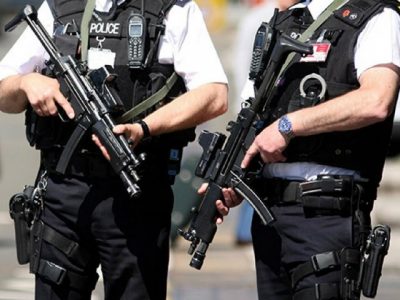By
Anant Mishra
On September 11, 2001 it was made clear that the United States had a new enemy: Al Qaeda and the new breed of extremism later termed as ‘Islamic Terrorism’.
The face of this enemy was made to look quite distinctive, having an average ‘Middle Eastern look’, common among Afghani men that drew the lines in a society for whom Islam was peaceful and thus, the new enemy was born. Osama Bin Laden brought a new age of war in the eyes of western nations, and this new battlefield was not only limited to the enemy’s own turf, but was openly accessible, anywhere in the world.
This new era of warfare resulted in billions of dollars being spent on war in the Middle East, but after fourteen years of fighting they found themselves in a similar situation. This time the enemy was more fierce and brutal in its methods: a new organisational structure known as ISIL.
The 2005 bombings in London opened a new door of ‘failing counter terrorism tactics’ in the west. The situation was unlike anything seen before, and the intelligence agencies reportedly never saw it coming.
Some experts say that they (Islamic terrorists) evolved over a period of time. Others blame it on the governmental failure to act swiftly while some blamed poor internal security that resulted in the loss of innocent lives. The fact today remains that no nation considers their people safe, the threat always being out there; it’s just a question of when. This new enemy is a master of all faces, has no source of power, operates in multiple cells, in several nations and unfortunately appears to be unstoppable.
We called it a ‘War on Terror’ but no international organisation has officially declared a war, rather the name was adopted by media outlets to represent its presence. The war has been fought on many fronts, air, land, sea and now online.
Today, London teeters on the peak level of security, as in previous years, numerous attempts were made to penetrate national security within. “Eliminating terrorist threats is a national priority and security agencies will always need the services they need”, Chancellor George Osborne stated. Andrew Parker, who was named Director General of MI5 in 2013, also revealed that intelligence agencies were aware of the group of small extremists with ties with Al Qaeda in Syria “planning to hit hard” in the west.
Having close ties with the US, the UK is always on the terror radar. Due to the high possibility of terrorist attacks, the UK has taken measures to tackle terrorists’ activities.
There are three main intelligence services in the UK, all having been put on high alert to counter terrorist activities at home. In addition to MI5, which is the UK’s domestic counter intelligence and security agency, there is the Secret Intelligence Services (more commonly known as MI6) which is a foreign intelligence service in the UK gathering intelligence overseas.
The signals intelligence is provided by the Government Communications Headquarters (GCHQ) which counters a wide range of threats on a daily basis, including terrorism and is also a national technical authority of the government for information assurance, tasked to store valuable information from theft, technical manipulation and other threats.
The Office of Security and Counter terrorism has come up with a strategy surrounding four main areas of work:
-
Pursue: To stop terrorist attacks
-
Prevent: To stop people becoming terrorists or promoting terrorism in any manner
-
Protect: To strengthen national protection against domestic and international threats
-
Prepare: To contain the impact of a terrorist attack
In January 2011, the UK Home Secretary published a report following a review of sensitive counter terrorism and security information which resulted in three new pieces of legislation being drafted.
The first was the Act of 2000 which aimed to provide a legal basis for prosecuting terrorists. The second legislation was the Protection of Freedom Act 2012 which would give search powers to the police, enabling an attack to be prevented before it happens. However this act implied an excessive use of force, so safeguards were put in place to prevent any such violations.
The third drafted was the Terrorism Prevention and Investigation Measures Act 2011, which re-established the need for new innovative methods to be adopted which led to technological advances in terrorism prevention and investigation measures.
Conclusion
Following David Cameron’s general election victory last week, new measures are being discussed by the Conservative government to counter terrorism within the UK. Fighting a war internationally and on domestic grounds is something which does not win you any friends but it is imperative that priority is given to internal security over others.



No Comments Yet!
You can be first to comment this post!